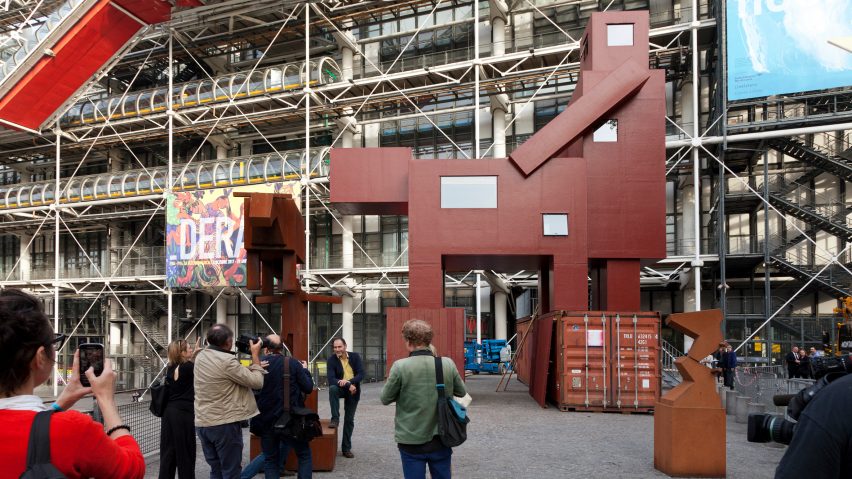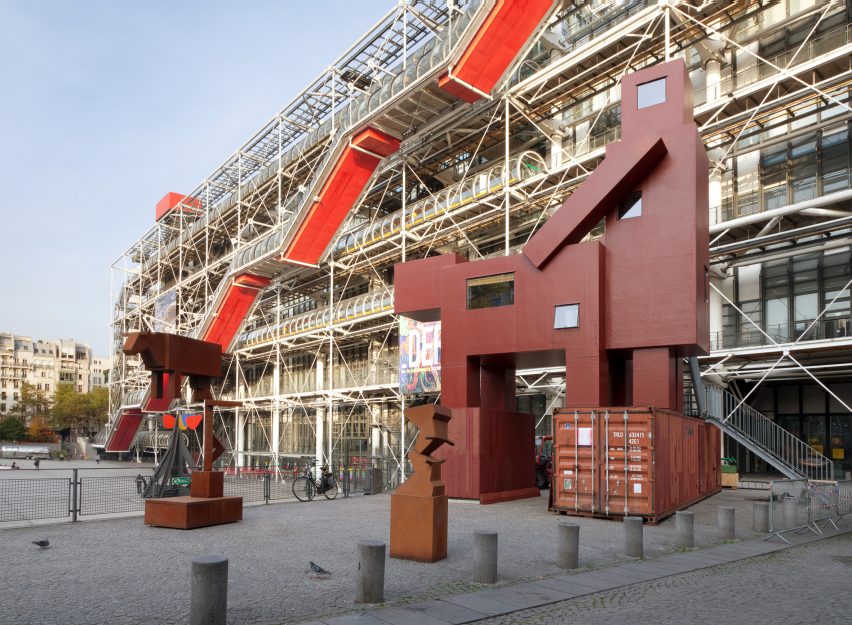
Centre Pompidou presents Atelier van Lieshout sculpture that was too lewd for Louvre
After being rejected by the Louvre, Atelier van Lieshout's controversial sculpture resembling a man penetrating an animal has been given a new public exhibition space, at Paris' Centre Pompidou – prompting one critic to describe it as "nasty public art".
Domestikator had been scheduled to go on display in the Jardin des Tuileries, as part of the International Contemporary Art Fair (FIAC), but was pulled at the last minute by the Louvre, amid concerns over the explicit nature of content.
Instead, the Centre Pompidou has installed it in the plaza that fronts the gallery, as part of its Hors les Murs exhibition programme.
Bernard Blistène, director of the Centre Pompidou, was behind the move. He said the square was the "perfect place" for Domestikator.
"The work of Atelier Van Lieshout is a beautiful utopia fully connected to the public space," said Blistène.
"I immediately asked the President of the Centre, Serge Lasvigne, if he'd agree to present the work and he straight away said yes."

The move has provoked a harsh response from Guardian columnist Jonathan Jones, who has branded the piece "nasty public art". The critic claimed that displaying it in a place where children and unsuspecting members of the public might see it is tantamount to bullying.
"It is the glibness and complacency of Domestikator's use of sex that makes it repulsive," he said. "Take it seriously, and the image it shows is inherently violent and cruel. Take it even more seriously and it is animal abuse."
Jones argues that pieces such as Tracey Emin's All I Want Is You, a bronze sculpture of a woman that looks like a phallus from some angles, correctly tread the line between art and pornography within the confines of the gallery space. But he says Domestikator is too confrontational.
"Van Lieshout's sculpture is an attack on the very idea that art should improve or enrich anything." he wrote. "Mocking the idealism of modern architects, it spreads a cynical nihilism of its own."
"This is not about censorship. It is about politeness," he added.

Atelier van Lieshout founder Joep van Lieshout – who was very vocal in his disappointment about the Louvre's decision to pull the display – said he is happy that the sculpture has found another home in Paris.
"I am pleased that visitors to the Pompidou will have the opportunity to experience this work, and hope that it generates questions and dialogue around the complexity of the issue of domestication," he said.
Speaking to Dezeen shortly after the Louvre first announced it would not show Domestikator, he accused the gallery of hypocrisy, in relation to the great many paintings and sculptures in its collection depicting nudity, rape and bestiality.
Van Lieshout has maintained that the work is not about sex and bestiality, but a questioning of what ethical taboos remain when science and technology can surpass the limits of biology.
He also said the piece is not even as explicit as he originally planned, due to budget constraints.

Atelier van Lieshout first unveiled the 12-metre-high Domestikator in 2015, as part of an art village he created at the Ruhrtriennale festival in Germany.
According to the artist, there have been no complaints from the public in the three years it has been on display in Germany, and it has even been used as a venue for a youth theatre.
Dezeen readers were less than impressed by Domestikator, although their objection was more on the grounds of aesthetic quality than moral outrage.
"If the subject is as nuanced as the artist proposes, it seems to me that the piece should be more nuanced as well," said a commenter named Jacob Volanski.
"It is not beautiful, and I highly doubt that the typical visitor to the gardens would see anything more than a crude sexual image," he added. "Just because something is provocative does not mean that it is thoughtful or worth consideration."
"Let's 'up' the sophistication of our analogies please," added another commenter, named Stephan.
"If you were truly passionate about your message, you would balance the art with making it more relatable. And, if you want to produce completely uninhibited 'art', go scribble on the walls of your parent's basement with crayon."